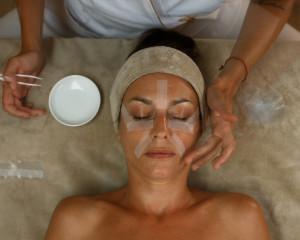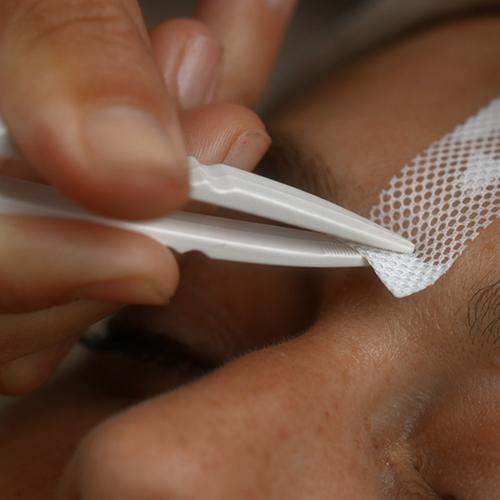 Our culture has a desperate obsession with youth. That’s not news, obviously – pick up any magazine, turn on the TV or radio, and you’ll be lucky to get five minutes before the newest anti-aging technology is thrown in your face. Though I believe in aging gracefully, I admit I’m still susceptible. I’ve tried some of the less expensive, more natural treatments, such as essential oil-based solutions, but I don’t think I’ll ever be willing to shell out big bucks to delay the inevitable – plus, Botox makes people look scary. I do find it interesting, however, to follow the development of new technologies that promise to restore that precious youthful glow.
Our culture has a desperate obsession with youth. That’s not news, obviously – pick up any magazine, turn on the TV or radio, and you’ll be lucky to get five minutes before the newest anti-aging technology is thrown in your face. Though I believe in aging gracefully, I admit I’m still susceptible. I’ve tried some of the less expensive, more natural treatments, such as essential oil-based solutions, but I don’t think I’ll ever be willing to shell out big bucks to delay the inevitable – plus, Botox makes people look scary. I do find it interesting, however, to follow the development of new technologies that promise to restore that precious youthful glow.
Like every other industry, 3D printing has made its way into the beauty business; not only does it have the potential to preserve life for much longer than ever before, but it could keep us looking great well into our later years. At least, that’s what companies like Biologique Recherche claim. Much like Radara’s 3D printed skin patches, Biologique Recherche’s “Second Skin” treatment utilizes hyaluronic acid to hydrate and plump the skin, purportedly removing wrinkles and fine lines in the process.
Second Skin uses a process called electrospinning, which is a 3D printing-like technique that creates solid fibers out of liquid solution. A technician feeds pure hyaluronic acid, a naturally occurring compound in the skin, into an electrospinner, which converts it to nanofibers that are then printed out in strips. Those strips, customized to the shape of the client’s face, are then applied to the face, where they actually dissolve right into the skin. It literally is a “second skin”; hyaluronic acid, along with collagen, elastin and proteoglycans, forms the substance of the dermis. The substance, which holds 1,000 times its weight in water, is a critical component in moisture retention – and, as every anti-aging product will remind us, moisturizing is key for a youthful complexion.“When topically applied, Hyaluronic Acid forms a continuous elastic film over the skin,” explains skin care expert Vicki Morav. “This film is permeable to cutaneous exchanges, retaining moisture and thereby contributing to maintaining good levels in the stratum corneum irrespective of ambient air humidity. This active ingredient also plays a crucial role in the cellular migration, bonding stimulation and proliferation processes involved in wound regeneration, reconstruction or healing. Hyaluronic acid significantly improves the skin’s healing process as it activates re-epithelialization, regulates cell proliferation and migration and reduces the roughness of the newly formed epidermis.”
 Second Skin technology, which took ten years to develop, was actually inspired by treatments used on severe burn victims. As a beauty treatment, it’s supposed to fill in fine lines and wrinkles, visibly tighten the skin, and essentially provide a facelift without the weird, unnatural look that traditional facelifts frequently impart. Like Radara, the effect is, unfortunately, only temporary, but so are most “fountain of youth” type treatments. Botox requires regular upkeep as well, and personally, if I were going to spend lots of money on repeated youth-imparting treatments, I’d rather spend it on 3D printed nanofiber strips than on injections of botulism toxin in my face. According to Allure’s Anne Bauso, who tried out the technique at New York’s Peninsula Spa, it really works, too.
Second Skin technology, which took ten years to develop, was actually inspired by treatments used on severe burn victims. As a beauty treatment, it’s supposed to fill in fine lines and wrinkles, visibly tighten the skin, and essentially provide a facelift without the weird, unnatural look that traditional facelifts frequently impart. Like Radara, the effect is, unfortunately, only temporary, but so are most “fountain of youth” type treatments. Botox requires regular upkeep as well, and personally, if I were going to spend lots of money on repeated youth-imparting treatments, I’d rather spend it on 3D printed nanofiber strips than on injections of botulism toxin in my face. According to Allure’s Anne Bauso, who tried out the technique at New York’s Peninsula Spa, it really works, too.
“I did an actual double take when I saw myself in the mirror: the outline of my jaw looked sharp and crisp, not at all like its usual soft and increasingly shapeless shelf,” Bauso remarks. “I couldn’t tell much difference in the rest of my face, but I really had a hard time looking away from my jaw.”
The technique isn’t cheap – a facial at the Peninsula Spa, for instance, will run you between $310 and $325. If it were permanent, I might consider it worth it, but regular treatments are scarcely affordable for anyone but the super-rich. Still, it’s a really interesting technology, and it’s noninvasive. If you can afford it, and want to shave a few years off your face for a special occasion, it might be worth a try. Are you interested in a treatment? Let’s discuss it over in the 3D Printed Skin Treatments forum at 3DPB.com.
Subscribe to Our Email Newsletter
Stay up-to-date on all the latest news from the 3D printing industry and receive information and offers from third party vendors.
You May Also Like
3D Printing News Briefs, April 13, 2024: Robotics, Orthotics, & Hypersonics
In 3D Printing News Briefs today, we’re focusing first on robotics, as Carnegie Mellon University’s new Robotics Innovation Center will house several community outreach programs, and Ugogo3D is now working...
Rail Giant Alstom Saves $15M with 3D Printing Automation Software 3D Spark
3D Spark has entered into a three-year deal with the rail giant Alstom. Alstom, a transport behemoth with annual revenues of $16 billion, specializes in the manufacture of trains, trams,...
Meltio Expands Global Reach with New Partnerships in the Americas and Europe
Spanish 3D printing manufacturer Meltio has expanded its sales network across the globe. With the addition of three new partners in the United States, Brazil, Argentina, and Italy, Meltio aims...
3D Printing Webinar and Event Roundup: April 7, 2024
Webinars and events in the 3D printing industry are picking back up this week! Sea-Air-Space is coming to Maryland, and SAE International is sponsoring a 3D Systems webinar about 3D...

































